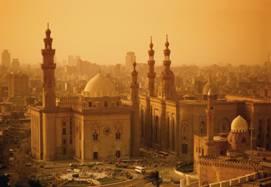Ahptan
| |||||
| Motto: Submit to Allah, Ahptan, and the Crown! | |||||
| unavailable | |||||
| Region | The Arab League | ||||
|---|---|---|---|---|---|
| Capital | Ahpt | ||||
| Official Language(s) | Arabic | ||||
| Leader | King Farid al-Whalid | ||||
| Sovereignty | -Federation in 750
-Ottoman colony in 1517 -Republic in 1922 -Kingdom in 1925 | ||||
| Population | 7.1 million (2007 est.) | ||||
| Currency | Ahptan Arabi (Å) | ||||
| Internet TLD | .ahp | ||||
| Calling code | +041
| ||||
| ISO Code | AHTN
| ||||
| NS Sunset XML | |||||
The Kingdom of Ahptan (Arabic: أهبتن المملكة العربية ) is a sovereign, monarchist nation on the Arabian Peninsula. It shares land borders with Saudi Arabia and sea borders with Egypt in the Red Sea. It has an estimated population of 7.1 million.
The Kingdom is sometimes called "Al Madinah" (Arabic: المدينه ). In English, it is most commonly referred to as Ahptan. Modern Ahptan was founded by Amad al-Whalid when he led a rebellion in 1923 against the newly-formed republic of Ahptan and ended successfully in 1925 with the proclamation and recognization of a kingdom.
Ahptan is known for having a extremely large market place in it's capital city of Ahpt, despite nearly closed borders and shifting trade routes due to nearby conflicts in Iraq, Sudan, Somalia, and the Levant Region. Ahptan is generally perceived by the western world as being a backwards, third-world country due to it's poor human rights record and half a century of closed border.
History
</div>
Main article: History of Ahptan
In 1922, with the defeat of the Ottoman Empire, the city of Ahpt and the neighboring cities declared independance and established a republic. Amad al-Whalid, field marshal of the then known Ahptani Republic, deemed the government useless and declared a monarchy in 1923, thus triggering the Ahptani Civil War which lasted almost 3 years. In 1925, Amad captured the capital city of Ahpt and declared the Kingdom of Ahptan with him as the ruler.
After setting up the new Whalid dynasty, Amad closed the country to the outside world except Saudi Arabia in a method used similarly by North Korea. During World War 2 (1939-1945), Ahptan sent military supplies to fellow Arab nationalists in Egypt, Transjordan, and Syria to fight against the British occupation. In the Arab-Israeli War (1948-1949), Ahptan followed Saudi Arabia and Yemen and declared war on the new state of Israel by sending 700 men fight along side the Jordanian forces. In the Six-Day War (1967), Ahptan sent 900 men to fight with the Egyptian forces in the Sinai Peninsula and sent an additional 200 men to fight with the Syrians in the Golan Heights.
Amad's rule came to an end when he died in 1974 and left his son, Farid al-Walid, the throne. When Farid came into power, he opened the country's borders strictly to other Middle Eastern countries to increase trade and hastened the industrialization process of Ahptan.
During the Gulf War, Farid expressed support for Iraq but did not send any assistance due to Saudi Arabia's entry into the war on the side of the United States. And currently in the Iraq War, Ahptan sends weaponry and funds to the Iraqi Sunni insurgents.
- See also: Red Sea Federation, Ahptan under Ottoman rule and Ahptani Republic
Military
Main article: Military of Ahptan
</div>Modern Ahptani military started out solely as the Ahptani Republican Guard led by Field Marshal Amad al-Whalid during the Republican years. After conquering Ahptan and declaring a monarchy, Amad created branches of the military.
Military branches of Ministry of Defence:
Independent Military branches:
Military branches of Ministry of Interior:
- Ahptani Arabian Police Force
- Ahptani Arabian Border Guard
- Ahptani Coast Guard
- Ahptani Emergency Force
Foreign relations
Main article: foreign relations of Ahptan
For half a century, Ahptan has had a closed border and limited diplomatic relations with other countries. When Farid ascended to the throne, the borders were open to only to Middle Eastern countries (except Israel due to the Arab-Israeli Conflict).
Cities
Main article: list of cities and towns in Ahptan
</div>| Largest Cities by Population (2007) |
mill. |
|---|---|
| Ahpt | 4.7 |
| Medina | 3.6 |
| Yanbu' al Bahr | 1.7 |
| Badr Hunayn | 0.8 |
Geography
The kingdom occupies about 10 percent of the Arabian Peninsula. The entire country is surrounded by Saudi Arabia with the western edge bordering the Red Sea. While the most of the Arabian Peninsula is desert or rocky lowlands, Ahptan sits on a fairly fertile area.
Native animals include the ibex, wildcats, baboons, wolves, and hyenas in the mountainous highlands. Small birds are found in the oases. The coastal area on the Red Sea with its coral reefs has a rich marine life.
Government
Main article: Politics of Ahptan
Coming soon





